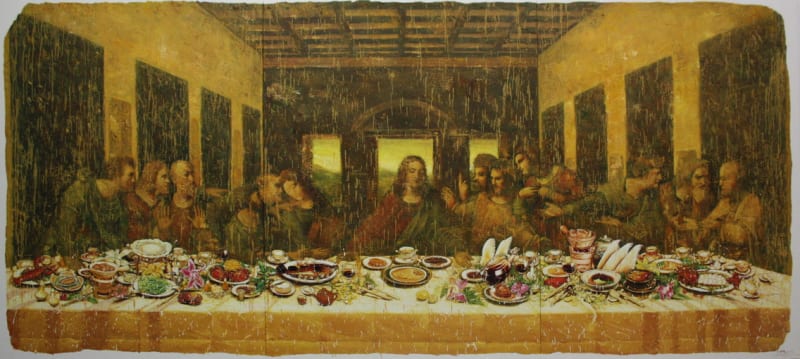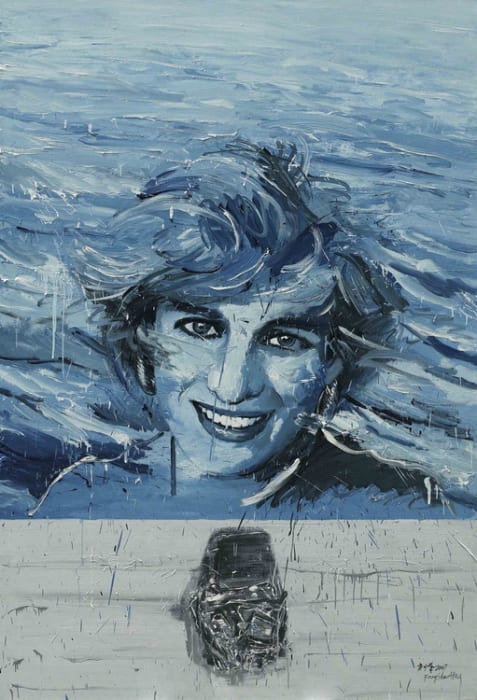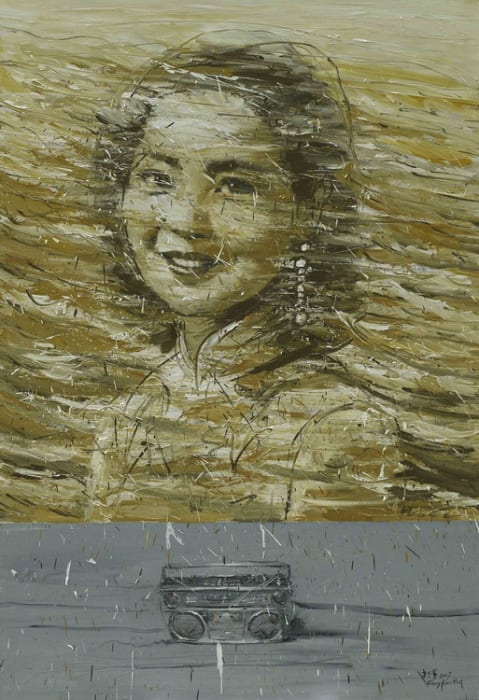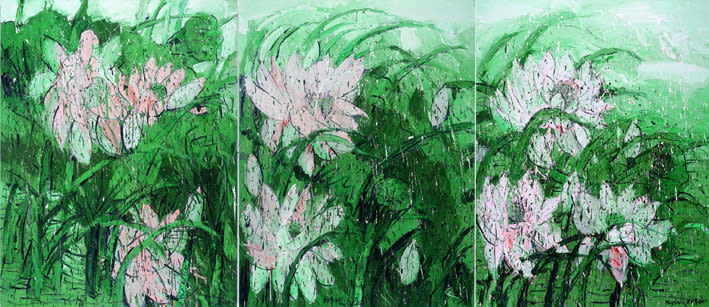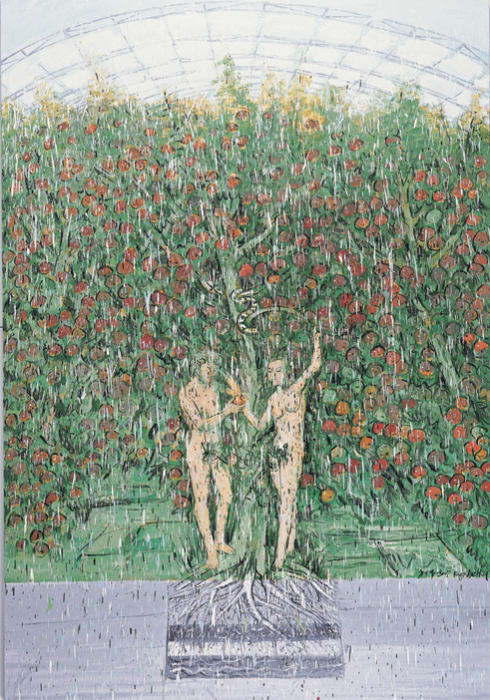Fang Shao Hua 方少華 b. 1962
Born in 1962 in Hubei, Fang Shao Hua graduated from Hubei Academy of Fine Arts in 1983. Fang is currently the Dean of Art Institute of South China Normal University.
Fang works from a solid foundation, having perfected both Chinese and Western painting techniques from an early age. Featuring brushstrokes that are as lively and variable as traditional Chinese ink paintings, his oil paintings employ a delicacy that has never appeared in the Western tradition. Participated in the avant-garde ’85 Movement, Fang Shao Hua's early works are greatly influenced by the German Neo-expressionism, but very soon, with the highly acclaimed “Arch Series”, he established his own artistic language.
In 1996, he was invited to participate in the group exhibition China! at Kunst Museum, Germany, all invitees are leading figures in contemporary Chinese art, including Zhang Xiao-gang, Wang Guang-yi, Yue Min-jun. In 2008, he held a well-acclaimed solo exhibition In Search of Harmless Apples for the Garden of Eden at the Shanghai Art Museum. His paintings have been exhibited at Power Station of Art in Shanghai, National Art Museum of China, Düsseldorf Art Museum in Germany, Singapore Art Museum, Tokyo Art Museum. His works are collected by many art museums, including Kunst Museum in Germany, Cultural and Art Foundation in Germany, National Art Museum of China in Beijing, Shanghai Art Museum in China, Guangdong Museum of Art in China, and other private collectors.
-
 As Time Goes By - Radio - Cassete Player《似水流年 - 收錄機》, 2007
As Time Goes By - Radio - Cassete Player《似水流年 - 收錄機》, 2007 -
 As Time Goes By - Mercedes Benz《似水流年 - 奔馳車》, 2007
As Time Goes By - Mercedes Benz《似水流年 - 奔馳車》, 2007 -
 Leaning Love from Harmless Apple《要吃無公害的蘋果才會懂得愛》, 2007
Leaning Love from Harmless Apple《要吃無公害的蘋果才會懂得愛》, 2007 -
 Invisible Frog Prince《看不見的青蛙王子》, 2007
Invisible Frog Prince《看不見的青蛙王子》, 2007 -
 As Time Goes By - Nunchakus 《似水流年 - 雙節棍)》, 2007
As Time Goes By - Nunchakus 《似水流年 - 雙節棍)》, 2007 -
 The Best Supper《最好的晚餐》, 2008
The Best Supper《最好的晚餐》, 2008 -
 Birds from the Song Dynasty《從宋代飛回來的珍禽》, 2010
Birds from the Song Dynasty《從宋代飛回來的珍禽》, 2010
Since mid-1980s, he has employed Expressionism, Pop Art and Surrealism and created serial oil works that spans through classic motives like searching for self-identity in suburb, renovation of cities, socio-cultural development, up-rise and downfall of trends, ecology and environmental protection, economy and finance, and of course, art history. Being a scholar-artist who cares about humanities and social phenomena, Fang has shown uniqueness in both motif and form. Starting from The Red Pillar series in early 90s, Fang has consolidated his remarkable style through series like The Arc and Umbrellas. In the recent decade, Time Goes By, The Eden and numerous reinventions of classics in art history have marked another milestone for him.
Starting from 2008, Fang playfully mimics of literati freestyle ink paintings, with pine, bamboo, peony, tiger and dragon being the key visuals. He has brought the unique character of Chinese brush into full bloom in his oil works. His works differ from traditional literati paintings by the overlapping oil brushwork, which is a deliberation to coincide with the freestyle element in ink. Rendering on Chinese xuan paper is water-based, however, the stylish brushwork and texture of oil contributes to a similar, yet novel visual impact.
Continued this development, he started to create the series of Bamboo without Regulation. He has brought the unique character of Chinese brush into full bloom in his oil works. His works differ from traditional literati paintings by the overlapping oil brushwork, which is a deliberation to coincide with the freestyle element in ink. Rendering on Chinese xuan paper is water-based, however, the stylish brushwork and texture of oil contributes to a similar, yet novel visual impact.
Each work of this series constitutes of many consecutive panels. Starting from the first, plain white panel, white bamboos are gradually coloured with light grey and dark grey, then diffuse and merge as a charcoal black bamboo clump. On the almost all black screen, he then continuously applied layers of grey and white brushworks in an attempt to fade the gradients until the screen was covered with the intense whiteness and transformed to an indescribable and abstract schema. The superimposition of black and white has wiped out the historical and cultural metaphors of image and symbol. It was born in emptiness, and then vanished into emptiness.
“In the neo-expressionist paintings of Fang Shao Hua, we are able to identify these spiritual and semantic individualities: he excels at creating a sense of history in his works with a relaxed and slightly amusing attitude and in a freedom-enriched and even splendid style; but he does not make value judgment on the graphic symbols in his pictures lightly, he would rather express his state of retrospection on between the material and the spiritual worlds and between the history and the present time, through the method of using expressive language to produce contradiction between different visual elements. He is such an artist that his works can describe and express themselves.”
Huang Zhuan, renowned art critic and curator

